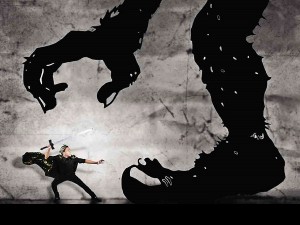
“Adarna,” the recent Dulaang UP production of the well-known Filipino folk tale that was adapted for the stage by playwright Vlad Gonzales and directed by José Estrella, turned out to be more of a coming-of-age story of its young princely hero Don Juan (Fitz Bitaña). Perhaps it would have been more accurate to retitle it to something akin to the seemingly impossible labors of Hercules, or the wondrous journey of Odysseus.
The titular bird and its main participation in the storyline were only played out in the first act. By the second act, it just hovered in the background as a mystical companion and/or fountain of wisdom that helped keep the play moving along by pointing our hero in the right direction.
More fanciful
The familiar tale of the kind but sick king Don Fernando (Greg de Leon), who sends out his three sons and heirs apparent to find the magical bird for its healing powers, is done by the first half. The second half is an even longer and more fanciful quest which takes Don Juan all of seven years not just to find the bird, but to explore a far greater world beyond his kingdom of Berbanya, a realm filled with magic and mayhem.
And he takes the audience with him along for the ride. Along the way, he matures, secures a bride (or several candidates for the position), and in a sense becomes more ready, emotionally and intellectually, to assume the throne.
Pure fantasy
This was a recipe for a romp, and the production and its young cast made no bones about it. Except for fleeting appearances here and there, the Adarna was rarely seen and, truth to tell, was hardly missed. In this two-hour-and-a-half theatrical narrative, Don Juan would bring down a one-eyed giant, defeat a slithering snake, swim to the depths of a murky sea, and venture deep, deep down into the center of the earth.
This was fantasy at its purest and, along with the beauty of a script spoken like poetry with background music to match, one could just, in a sense, “sit back and enjoy the show.” This “Adarna” was meant to be a spectacle, smartly written and with humor in all the right places, if slightly overlong.
What did keep the audience’s attention was how the familiar cliches and tropes were rendered with clever sleight-of-hand tricks. There were many of them, actually, and a second viewing seemed to be called for just to fully appreciate the techniques applied. Nor was it only a matter of the production designer having been given a bigger budget to put in more bells and whistles, or the equivalent of falling chandeliers.
Simple innovations
The innovations could be simple, but in their own quiet way stunning. The proverbial drop into a thousand-feet hole using only a rope was implemented with a ball of light on the stage and a couple of actors performing as doubles. Duplication of bodies was again used, this time with half-a-dozen look-alikes wearing the same costume, to mirror either a magical creature’s omnipresence or faster-than-light travel. The battle with the giant was made possible by interplaying the actor playing him on one side of the stage with lighting effects that simulated another actor’s overgrown shadow on the other.
To further make the play appeal and reach out to its young audience, current idioms and catchphrases were interspersed with the classical Tagalog script and, more often than not, had the crowd roaring.
“Adarna” paid slight homage to local and foreign pop culture in some of its devices. Don Juan’s victory against the giant echoed that now classic scene in the first Indiana Jones movie where the swashbuckling hero’s surprise tactic felled in a second the fearsome swordsman before him.
Missing its mark
The play started with a bang and on a high note, and it could have ended the same way. Unfortunately, and this is where it missed its mark, “Adarna’s” ending was thematically opposite to what had largely transpired before it. To avert a political crisis that occurs in the aftermath of Don Juan’s victorious return to his father’s kingdom, Don Fernando elevates him to heir apparent.
The play left it at that, leaving an ominous tone as the hero now prepared to confront his new role. But this ending opened a whole new can of worms which “Adarna” did not address. Will the two resentful brothers not respond with another form of treachery, if not outright rebellion? Why this sudden brooding atmosphere that seemed to question Don Juan’s ability to rule his kingdom?
The change in tone was jarring and baffling. The early parts of the play made no pretensions about the youthful, feel-good and occasionally comic approach to the original material. Even the two treacherous brothers had their funny moments. Without the proper creative and emotional preparation that could have laid the foundation for this sudden and inexplicable downbeat moment, the audience was left groping in the end, intellectually and emotionally.
Consistency could have made “Adarna” soar. Instead, it left questions even the wise mythical creature at its center would have found difficult to answer.

